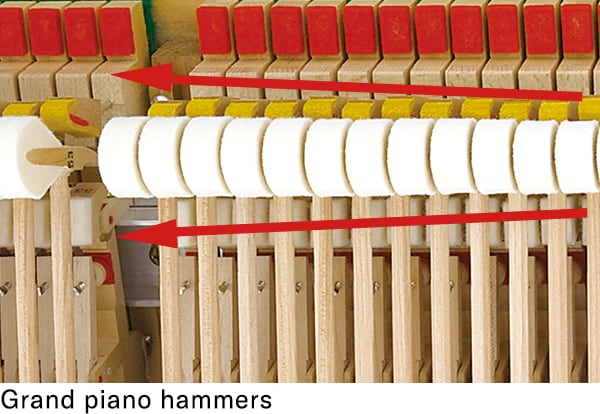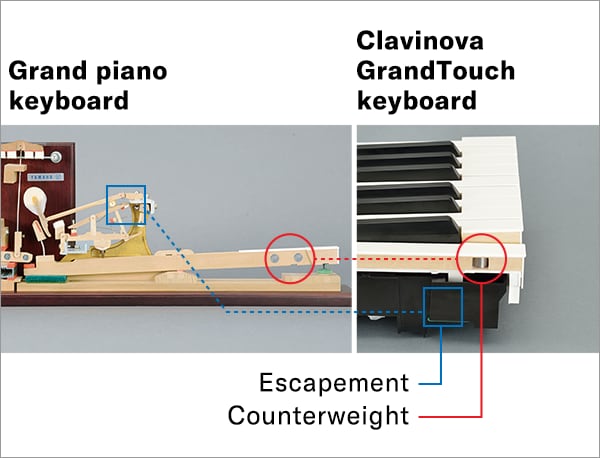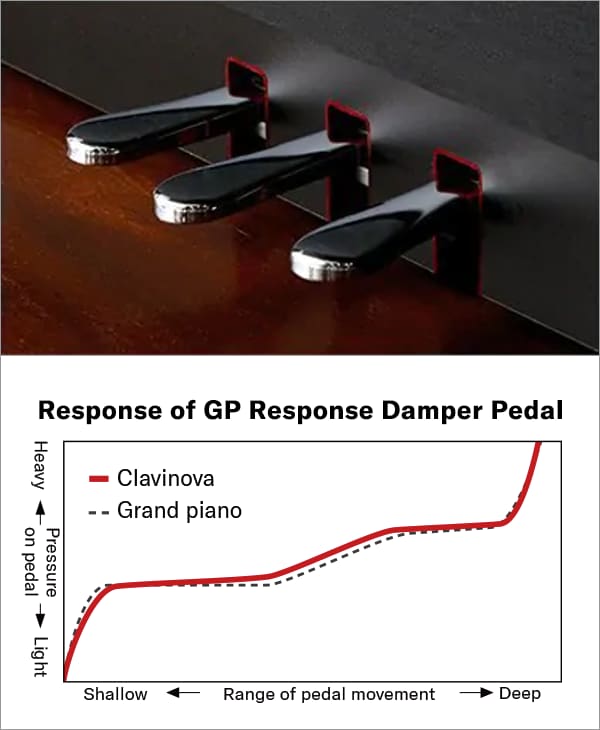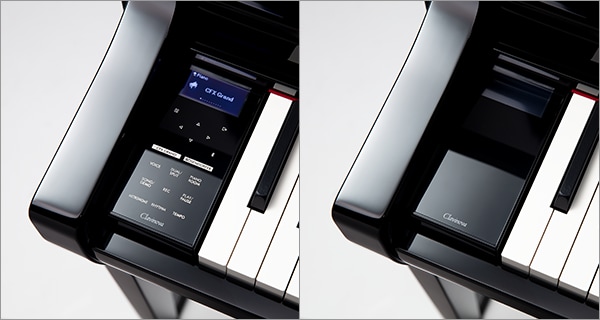- Find Related Accessories Here Find Related Accessories Here Find Related Accessories Here Find Related Accessories Here Find Related Accessories Here Find Related Accessories Here Find Related Accessories Here Find Related Accessories Here Find Related Accessories Here Find Related Accessories Here Learn piano here 10 Learn piano here 11 18 Installments
- Find Related Accessories Here Find Related Accessories Here Find Related Accessories Here Find Related Accessories Here Find Related Accessories Here Find Related Accessories Here Find Related Accessories Here Find Related Accessories Here Find Related Accessories Here Find Related Accessories Here Learn piano here 10 Learn piano here 11 warranty_2
- Find Related Accessories Here Find Related Accessories Here Find Related Accessories Here Find Related Accessories Here Find Related Accessories Here Find Related Accessories Here Find Related Accessories Here Find Related Accessories Here Find Related Accessories Here Find Related Accessories Here Learn piano here 10 Learn piano here 11 bluetooth_1
- Find Related Accessories Here Find Related Accessories Here Find Related Accessories Here Find Related Accessories Here Find Related Accessories Here Find Related Accessories Here Find Related Accessories Here Find Related Accessories Here Find Related Accessories Here Find Related Accessories Here Learn piano here 10 Learn piano here 11 UserXmlFull
- Find Related Accessories Here Find Related Accessories Here Find Related Accessories Here Find Related Accessories Here Find Related Accessories Here Find Related Accessories Here Find Related Accessories Here Find Related Accessories Here Find Related Accessories Here Find Related Accessories Here Learn piano here 10 Learn piano here 11 UserXmlAGIMP
- Find Related Accessories Here Find Related Accessories Here Find Related Accessories Here Find Related Accessories Here Find Related Accessories Here Find Related Accessories Here Find Related Accessories Here Find Related Accessories Here Find Related Accessories Here Find Related Accessories Here Learn piano here 10 Learn piano here 11 UserXmlAGIMPHSJ
YAMAHA CLP-795GP Polished Ebony Clavinona

BRAND: Yamaha
- Find Related Accessories Here Find Related Accessories Here Find Related Accessories Here Find Related Accessories Here Find Related Accessories Here Find Related Accessories Here Find Related Accessories Here Find Related Accessories Here Find Related Accessories Here Find Related Accessories Here Learn piano here 10 Learn piano here 11 18 Installments
- Find Related Accessories Here Find Related Accessories Here Find Related Accessories Here Find Related Accessories Here Find Related Accessories Here Find Related Accessories Here Find Related Accessories Here Find Related Accessories Here Find Related Accessories Here Find Related Accessories Here Learn piano here 10 Learn piano here 11 warranty_2
- Find Related Accessories Here Find Related Accessories Here Find Related Accessories Here Find Related Accessories Here Find Related Accessories Here Find Related Accessories Here Find Related Accessories Here Find Related Accessories Here Find Related Accessories Here Find Related Accessories Here Learn piano here 10 Learn piano here 11 bluetooth_1
- Find Related Accessories Here Find Related Accessories Here Find Related Accessories Here Find Related Accessories Here Find Related Accessories Here Find Related Accessories Here Find Related Accessories Here Find Related Accessories Here Find Related Accessories Here Find Related Accessories Here Learn piano here 10 Learn piano here 11 UserXmlFull
- Find Related Accessories Here Find Related Accessories Here Find Related Accessories Here Find Related Accessories Here Find Related Accessories Here Find Related Accessories Here Find Related Accessories Here Find Related Accessories Here Find Related Accessories Here Find Related Accessories Here Learn piano here 10 Learn piano here 11 UserXmlAGIMP
- Find Related Accessories Here Find Related Accessories Here Find Related Accessories Here Find Related Accessories Here Find Related Accessories Here Find Related Accessories Here Find Related Accessories Here Find Related Accessories Here Find Related Accessories Here Find Related Accessories Here Learn piano here 10 Learn piano here 11 UserXmlAGIMPHSJ
GrandTouch™ keyboard
Yamaha’s latest keyboard action features a broad dynamic range and faithful response to every nuance of touch that puts a wide expanse of tone—from delicate to bold—at the pianist’s fingertips. The highly consistent grand piano hammers replicate the pleasing response felt when the hammers strike the strings, enabling precise control of the tone. Highly absorbent synthetic-ivory white keys and synthetic-ebony black keys prevent slipping even during extended play and feel just like those of a grand piano.
GrandTouch keyboard features wooden keys that showcase Yamaha’s expertise with wood for pianos. Just as with grand piano keyboards, the solid wood is cut from the very best parts of well-dried lumber, making the keys more resistant to warping than keyboards made of laminated wood. The wooden texture and structure of the keys create a more grand piano-like feel.

Leverage your artistic expression
When playing a digital piano, the back area of the keys may prove to be a challenge to full musical expression. This is because the back of the key is closest to the fulcrum of the action. The closer to this pivot point that you strike the key, the less leverage you have and the more strength you need to apply. The greater length of GrandTouch keys give the player MORE leverage, allowing for better expressive control, even at the backs of the keys. This is the same support length found on the Yamaha S3X premium grand piano (as of July 2020), and is the longest support length used on any digital piano.

88-key Linear Graded Hammers—the first digital piano keyboard ever to feature realistic weighting on every key
Every single key on a grand piano keyboard is weighted differently. This is because the strings for each note are slightly thinner and shorter in the treble register, becoming thicker and longer towards the bass register. The 88-key Linear Graded Hammers of the Clavinova is the first-of-its-kind to faithfully duplicate this graded touch with differing weights and key return on each one of its keys. This results in a feel and response that is astonishingly like that of a grand piano, and allows players to gain an appreciation of a more authentic touch.

Key counterweights
Counterweights are embedded in the keys of a grand piano to balance the weight of the hammers and offer more precise control when playing delicately at low volumes. The Clavinova features carefully adjusted counterweights for improved playability when playing pianissimo with a light touch, and better key return in rapid passages. The keyboard of the Clavinova has been fine-tuned to offer optimal balance, emphasizing its superb playability and grand piano response.
Escapement mechanism of Clavinova keyboards
The escapement mechanism in a grand piano moves the hammers away from the strings quickly after they strike them, in order to prevent any interference with string vibration. This mechanism produces a slight clicking sensation when the keys are pressed gently.
The Clavinova keyboards feature an escapement mechanism that reproduces this sensation near the bottom of the key dip. They have been designed in such a way that the click is discernible only on the lightest keystrokes, similar to the keyboard of a grand piano. These keyboards have been adjusted to provide additional friction that balances key repetition and response without impeding performance.

The GP Response Damper Pedal
Using the damper pedal subtly alters the nature of a piano’s sound and is essential to providing the pianist with all the necessary expressive tools to convey their musical vision.
Clavinova digital pianos feature a damper pedal that continually detects depression depth and allows halfpedaling, which lets players make minute adjustments to pedal depression and return, changing the depth and character of their piano sound.
The GP Response Damper Pedal offers a grand piano-style resistance curve, starting out light to the touch and growing heavier as the pedal is depressed further. This allows players to become accustomed to the nuances of delicate pedaling.

Design philosophy
Clavinova pianos boast excellent playability and versatile functions, along with a refined, authentic design that blends a compact form with modern aesthetics in a manner befitting the instrument that sets the contemporary standard for pianos. At the heart of the Clavinova design concept is the way the player feels when they take their seat in front of a Clavinova piano. Unnecessary elements are removed from the player’s field of vision to create a convincingly natural space that feels just like sitting at an acoustic piano. This represents Yamaha’s consideration to players who practice on Clavinova and perform on grand pianos—they are able to take the stage free of tension or worry because everything feels normal, as it should. A Clavinova piano is a part of the player’s everyday life—contemporary accents and color variation are available to mesh with any interior design or lifestyle.

Touch sensor control panel
The touch panel only displays text when it is on—when the panel is off, it has the smooth finish of a keyblock.
Sensitivity

Grand Expression Modeling
The interaction and interplay of the hammers, dampers, and strings inside a grand piano respond to the subtlest nuances of the pianist’s touch, creating a limitless range of tonal expression. Touch refers to the pianist’s control, not only of intensity (softness/loudness) in playing and releasing the keys, but also of the speed and depth with which the keys are pressed. The Grand Expression Modeling introduced in the CLP-700 Series translates the widely varied input from the pianist’s fingers into the same limitless tonal variation of a grand piano.
This makes it possible to vary the output by playing the keys to different depths and with different speeds, even when using techniques such as trills or legato or emphasizing the melody over the accompaniment. Grand Expression Modeling excels at faithfully reproducing the output expected of these techniques in many well-known songs. In Debussy’s “Clair de Lune,” a loose touch creates the faint tone that makes the melody stand out more crisply. In Liszt’s “Un Sospiro,” the accompanying arpeggios accent the melody without overwhelming it, and varied expression of the melody gives it the same quality as vocals. In the last of the Chopin nocturnes, trills, legato, and other delicate techniques where fingers seem to float over the keys deliver the airy, smooth tonal expression required. Playing such pieces on a highly expressive piano helps the pianist learn various techniques and experience the same joy of expression as a painter, but through sound.
Sound Quality

Newly sampled Yamaha CFX and Bosendorfer Imperial voices
Clavinova grand piano sounds are recorded from several world-renowned concert grand pianos. One of them is the CFX, Yamaha’s top-flight concert grand piano. Pianists around the world are enamored with the impressive, dazzling, richly expressive sound of the CFX in concert halls. Another sampled concert grand is the Imperial, the flagship model of Bosendorfer, a time-honored Viennese piano brand with an ardent following. The Imperial is known for its abundance of color and natural, warm feeling. Yamaha faithfully reproduces the idiosyncrasies of these concert grand pianos by carefully recording the entire tonal range of each of the 88 keys, making minute adjustments to capture the most harmonious tones each piano has to offer.

Virtual Resonance Modeling
One of the allures of the grand piano is the sympathetic resonance created by the vibration of the entire instrument. Clavinova pianos elaborately reproduce this rich sympathetic resonance through a groundbreaking technology called Virtual Resonance Modeling (VRM). VRM creates a richly varied sound by simulating the complex sympathetic tones created when the vibrations of the strings are propagated to the soundboard and other strings, corresponding to the timing and intensity of key playing and pedaling. CLP-700 Series pianos even replicate the sounds the dampers make when they are raised off the strings, in addition to the resonance of the duplex scaling, strings, soundboard, and case. Clavinova pianos allow you to enjoy the same momentary dynamics and deep sympathetic sounds that are produced by the entire body of a grand piano.

A fully immersive concert grand experience—even with headphones
Binaural sampling is a method of sampling in which special microphones are placed on a mannequin’s head in the same positions as the pianist’s ears to capture piano sounds the way that they sound in reality.
We chose this method to create the ambience and full, natural resonance of acoustic pianos in Clavinova pianos. This makes pianists feel as though they are sitting at a grand piano even when they play with headphones on. The experience is so pleasant that they forget they are wearing headphones, no matter how long they continue to play.
On CLP-700 Series pianos, binaural sampling was used for the Bosendorfer Imperial as well as the Yamaha CFX. Yamaha achieves higher-definition binaural sound with a specia
- Is Overweight Product: False
- Series: CLP
- Number of Keys: 88
- Weighted Keys: Υes
- Touch Sensitivity: Υes
- Recording: Yes
- Polyphony: 256
- Color: Black
- Finish: Polished
- Keyboard Type: 88 βαρυκεντρισμένα ξύλινα πλήκτρα με τεχνολογία GrandTouch: Μαύρα πλήκτρα από συνθετικό έβενο και άσπρα ξύλινα πλήκτρα με επιφάνεια ivory
- Number of Keys: 88
- Keys Sensitivity: Hard 2, Hard 1, Medium, Soft 1, Soft 2, Fixed
- Number of Pedals: 3
- Functions of Pedals: Damper, Sostenuto, Soft και επιπλέον λειτουργίες Pitch Bend Up, Pitch Bend Down, Rotary Speed, Vibe Rotor, Song Play/Pause
- Number of Voices: 53
- Number of Preset Songs: 25 τραγούδια voice demo + 50 κλασικά + 303 τραγούδια εκμάθησης.
- USB Capability: Ναι / USB Audio Recorder
- Dual/Split: Ναι / Ναι
- Metronome: 5 - 500
- MIDI: In , Out , Thru
- Speakers: 16 cm + 8 cm + 2.5 cm) x 2, ισχύος (50 W + 50 W + 50 W) x 2
- Polyphony: 256
- Production Technology Sounds: Yamaha CFX, Bosendorfer Imperial
- Recorder Capability: Ναι
- Channels: 16 track recording x USB Audio Recording
- Effects: 6 X Reverb, 3 X Chorus, Brilliance (7+ User), Intelligent Acoustic Control (IAC), Stereophonic Optimizer
- Key-off Samples: Nαι
- String Resonance: Nαι
- Style Creator: Nαι
- USB Audio Recorder: Ναι
- Transpose/ Tuning: 12 - 0 - +12 / 414.8 - 440.0 - 466.8 Hz (~ 0.2 Hz )
- Headphones Output: Ναι
- Inputs/ Outputs: AUX IN ( Stereo Mini jack) MIDI : [IN] [OUT] [THRU] USB TO DEVICE / USB TO HOST AUX OUT [L/L+R] [R]
- Internet Direct Connection (IDC): Nαι
- Dimensions (W x H x D): 1430 mm X 932 mm X 1147 mm
- Weight: 126 kg
- Color: Mαύρο γυαλιστερό
Available on request

-
DESCRIPTION
GrandTouch™ keyboard
Yamaha’s latest keyboard action features a broad dynamic range and faithful response to every nuance of touch that puts a wide expanse of tone—from delicate to bold—at the pianist’s fingertips. The highly consistent grand piano hammers replicate the pleasing response felt when the hammers strike the strings, enabling precise control of the tone. Highly absorbent synthetic-ivory white keys and synthetic-ebony black keys prevent slipping even during extended play and feel just like those of a grand piano.
GrandTouch keyboard features wooden keys that showcase Yamaha’s expertise with wood for pianos. Just as with grand piano keyboards, the solid wood is cut from the very best parts of well-dried lumber, making the keys more resistant to warping than keyboards made of laminated wood. The wooden texture and structure of the keys create a more grand piano-like feel.

Leverage your artistic expression
When playing a digital piano, the back area of the keys may prove to be a challenge to full musical expression. This is because the back of the key is closest to the fulcrum of the action. The closer to this pivot point that you strike the key, the less leverage you have and the more strength you need to apply. The greater length of GrandTouch keys give the player MORE leverage, allowing for better expressive control, even at the backs of the keys. This is the same support length found on the Yamaha S3X premium grand piano (as of July 2020), and is the longest support length used on any digital piano.

88-key Linear Graded Hammers—the first digital piano keyboard ever to feature realistic weighting on every key
Every single key on a grand piano keyboard is weighted differently. This is because the strings for each note are slightly thinner and shorter in the treble register, becoming thicker and longer towards the bass register. The 88-key Linear Graded Hammers of the Clavinova is the first-of-its-kind to faithfully duplicate this graded touch with differing weights and key return on each one of its keys. This results in a feel and response that is astonishingly like that of a grand piano, and allows players to gain an appreciation of a more authentic touch.

Key counterweights
Counterweights are embedded in the keys of a grand piano to balance the weight of the hammers and offer more precise control when playing delicately at low volumes. The Clavinova features carefully adjusted counterweights for improved playability when playing pianissimo with a light touch, and better key return in rapid passages. The keyboard of the Clavinova has been fine-tuned to offer optimal balance, emphasizing its superb playability and grand piano response.
Escapement mechanism of Clavinova keyboards
The escapement mechanism in a grand piano moves the hammers away from the strings quickly after they strike them, in order to prevent any interference with string vibration. This mechanism produces a slight clicking sensation when the keys are pressed gently.
The Clavinova keyboards feature an escapement mechanism that reproduces this sensation near the bottom of the key dip. They have been designed in such a way that the click is discernible only on the lightest keystrokes, similar to the keyboard of a grand piano. These keyboards have been adjusted to provide additional friction that balances key repetition and response without impeding performance.

The GP Response Damper Pedal
Using the damper pedal subtly alters the nature of a piano’s sound and is essential to providing the pianist with all the necessary expressive tools to convey their musical vision.
Clavinova digital pianos feature a damper pedal that continually detects depression depth and allows halfpedaling, which lets players make minute adjustments to pedal depression and return, changing the depth and character of their piano sound.
The GP Response Damper Pedal offers a grand piano-style resistance curve, starting out light to the touch and growing heavier as the pedal is depressed further. This allows players to become accustomed to the nuances of delicate pedaling.

Design philosophy
Clavinova pianos boast excellent playability and versatile functions, along with a refined, authentic design that blends a compact form with modern aesthetics in a manner befitting the instrument that sets the contemporary standard for pianos. At the heart of the Clavinova design concept is the way the player feels when they take their seat in front of a Clavinova piano. Unnecessary elements are removed from the player’s field of vision to create a convincingly natural space that feels just like sitting at an acoustic piano. This represents Yamaha’s consideration to players who practice on Clavinova and perform on grand pianos—they are able to take the stage free of tension or worry because everything feels normal, as it should. A Clavinova piano is a part of the player’s everyday life—contemporary accents and color variation are available to mesh with any interior design or lifestyle.

Touch sensor control panel
The touch panel only displays text when it is on—when the panel is off, it has the smooth finish of a keyblock.
Sensitivity

Grand Expression Modeling
The interaction and interplay of the hammers, dampers, and strings inside a grand piano respond to the subtlest nuances of the pianist’s touch, creating a limitless range of tonal expression. Touch refers to the pianist’s control, not only of intensity (softness/loudness) in playing and releasing the keys, but also of the speed and depth with which the keys are pressed. The Grand Expression Modeling introduced in the CLP-700 Series translates the widely varied input from the pianist’s fingers into the same limitless tonal variation of a grand piano.
This makes it possible to vary the output by playing the keys to different depths and with different speeds, even when using techniques such as trills or legato or emphasizing the melody over the accompaniment. Grand Expression Modeling excels at faithfully reproducing the output expected of these techniques in many well-known songs. In Debussy’s “Clair de Lune,” a loose touch creates the faint tone that makes the melody stand out more crisply. In Liszt’s “Un Sospiro,” the accompanying arpeggios accent the melody without overwhelming it, and varied expression of the melody gives it the same quality as vocals. In the last of the Chopin nocturnes, trills, legato, and other delicate techniques where fingers seem to float over the keys deliver the airy, smooth tonal expression required. Playing such pieces on a highly expressive piano helps the pianist learn various techniques and experience the same joy of expression as a painter, but through sound.
Sound Quality

Newly sampled Yamaha CFX and Bosendorfer Imperial voices
Clavinova grand piano sounds are recorded from several world-renowned concert grand pianos. One of them is the CFX, Yamaha’s top-flight concert grand piano. Pianists around the world are enamored with the impressive, dazzling, richly expressive sound of the CFX in concert halls. Another sampled concert grand is the Imperial, the flagship model of Bosendorfer, a time-honored Viennese piano brand with an ardent following. The Imperial is known for its abundance of color and natural, warm feeling. Yamaha faithfully reproduces the idiosyncrasies of these concert grand pianos by carefully recording the entire tonal range of each of the 88 keys, making minute adjustments to capture the most harmonious tones each piano has to offer.

Virtual Resonance Modeling
One of the allures of the grand piano is the sympathetic resonance created by the vibration of the entire instrument. Clavinova pianos elaborately reproduce this rich sympathetic resonance through a groundbreaking technology called Virtual Resonance Modeling (VRM). VRM creates a richly varied sound by simulating the complex sympathetic tones created when the vibrations of the strings are propagated to the soundboard and other strings, corresponding to the timing and intensity of key playing and pedaling. CLP-700 Series pianos even replicate the sounds the dampers make when they are raised off the strings, in addition to the resonance of the duplex scaling, strings, soundboard, and case. Clavinova pianos allow you to enjoy the same momentary dynamics and deep sympathetic sounds that are produced by the entire body of a grand piano.

A fully immersive concert grand experience—even with headphones
Binaural sampling is a method of sampling in which special microphones are placed on a mannequin’s head in the same positions as the pianist’s ears to capture piano sounds the way that they sound in reality.
We chose this method to create the ambience and full, natural resonance of acoustic pianos in Clavinova pianos. This makes pianists feel as though they are sitting at a grand piano even when they play with headphones on. The experience is so pleasant that they forget they are wearing headphones, no matter how long they continue to play.
On CLP-700 Series pianos, binaural sampling was used for the Bosendorfer Imperial as well as the Yamaha CFX. Yamaha achieves higher-definition binaural sound with a specia
- ATTRIBUTES
- Is Overweight Product: False
- Series: CLP
- Number of Keys: 88
- Weighted Keys: Υes
- Touch Sensitivity: Υes
- Recording: Yes
- Polyphony: 256
- Color: Black
- Finish: Polished
- Keyboard Type: 88 βαρυκεντρισμένα ξύλινα πλήκτρα με τεχνολογία GrandTouch: Μαύρα πλήκτρα από συνθετικό έβενο και άσπρα ξύλινα πλήκτρα με επιφάνεια ivory
- Number of Keys: 88
- Keys Sensitivity: Hard 2, Hard 1, Medium, Soft 1, Soft 2, Fixed
- Number of Pedals: 3
- Functions of Pedals: Damper, Sostenuto, Soft και επιπλέον λειτουργίες Pitch Bend Up, Pitch Bend Down, Rotary Speed, Vibe Rotor, Song Play/Pause
- Number of Voices: 53
- Number of Preset Songs: 25 τραγούδια voice demo + 50 κλασικά + 303 τραγούδια εκμάθησης.
- USB Capability: Ναι / USB Audio Recorder
- Dual/Split: Ναι / Ναι
- Metronome: 5 - 500
- MIDI: In , Out , Thru
- Speakers: 16 cm + 8 cm + 2.5 cm) x 2, ισχύος (50 W + 50 W + 50 W) x 2
- Polyphony: 256
- Production Technology Sounds: Yamaha CFX, Bosendorfer Imperial
- Recorder Capability: Ναι
- Channels: 16 track recording x USB Audio Recording
- Effects: 6 X Reverb, 3 X Chorus, Brilliance (7+ User), Intelligent Acoustic Control (IAC), Stereophonic Optimizer
- Key-off Samples: Nαι
- String Resonance: Nαι
- Style Creator: Nαι
- USB Audio Recorder: Ναι
- Transpose/ Tuning: 12 - 0 - +12 / 414.8 - 440.0 - 466.8 Hz (~ 0.2 Hz )
- Headphones Output: Ναι
- Inputs/ Outputs: AUX IN ( Stereo Mini jack) MIDI : [IN] [OUT] [THRU] USB TO DEVICE / USB TO HOST AUX OUT [L/L+R] [R]
- Internet Direct Connection (IDC): Nαι
- Dimensions (W x H x D): 1430 mm X 932 mm X 1147 mm
- Weight: 126 kg
- Color: Mαύρο γυαλιστερό
- See Also
-
Already in cart

- SOLD OUT
- hidden
- uptosixinstallments
- hidden
- hidden
Headphones
SENNHEISER HD-280-Pro Headphones
Sennheiser
Code 50684589.00 € -
Already in cart

- SOLD OUT
- hidden
- uptosixinstallments
- hidden
Piano Stools
STAGG PB39 SBK Adjustable Piano Bench Polished Ebony
Stagg
Code 21263109.00 € -
Already in cart

- SOLD OUT
- bluetooth_1
- hidden
Midi Interfaces
YAMAHA MD-BT-01 Bluetooth Midi Adaptor
Yamaha
Code CMDBT0149.50 €
- ATTRIBUTES









